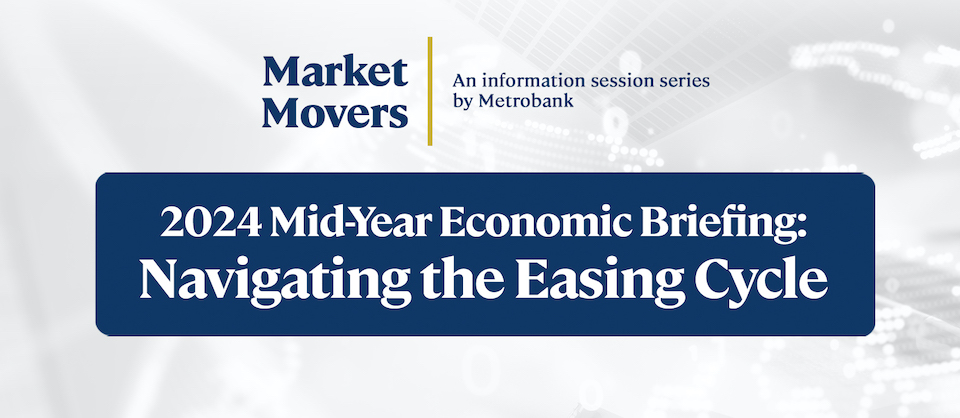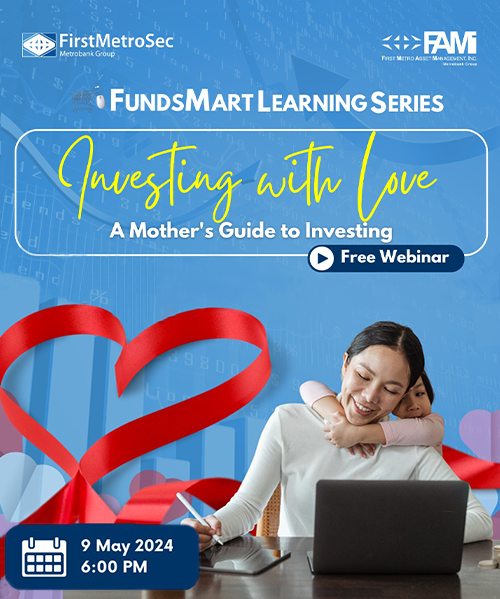




Policy Rate Updates: Double cut finale
 DOWNLOAD
DOWNLOAD

Monthly Economic Update: One for the road
 DOWNLOAD
DOWNLOAD

Inflation Update: Still low, still slow
 DOWNLOAD
DOWNLOAD


For investors, 2024 is year of transition to a new economic order

Jan 2 – Investors appear convinced that major Western central banks are close to a much-awaited pivot, from raising interest rates to cutting them. Markets rallied as a result, but 2024 could hold surprises as the world adjusts to an economic order where money is not cheap.
Global stocks rallied and top government bond yields fell in recent weeks, despite central bankers cautioning against pivot bets. In the United States, for example, investors are now effectively positioned for the Federal Reserve guiding the economy to a perfect landing, bringing down inflation without triggering a recession.
The market’s conviction comes after the US economy surprised people with its resilience. That was cushioned in part by consumers’ pandemic savings and America’s attractiveness as a safe port for investments in an increasingly chaotic world. They could be right — a well-known economist and former Fed official earlier this year argued the Fed has managed soft landings more often than is generally believed.
But many investors and executives think the probability is low. The pandemic-era savings are getting depleted and storm clouds are gathering, especially with what’s shaping to be contentious US elections.
Investors are betting that the Fed could cut rates by as much as 1.5% by the end of 2024, but that would still leave policy rates at close to 4%, higher than where it has been for most of the past two decades. At that level, monetary policy will still be a drag on growth, as it would be above the so-called neutral rate at which the economy neither expands nor contracts.
Add to that a host of other risks to the outlook in 2024 — two major wars, heightened geopolitical tensions that have put globalization firmly in reverse, and elections in several countries that could radically change the world order in unexpected ways.
WHY IT MATTERS
Interest rates underpin everything, from economic growth to the price of financial assets and how much it costs to borrow to buy a car or a house.
Higher rates make riskier assets, such as technology stocks and cryptocurrencies less attractive, as investors can earn a decent return without having to take on much risk.
With money harder to come by, riskier bets can fail and bubbles burst, leading to events such as the US regional banking crisis last March. As businesses struggle, they retrench. People lose jobs and new ones get scarce.
WHAT IT MEANS FOR 2O24
While the Fed and other banks have been raising rates for well over a year, the world is yet to complete the transition from the time when money was free to a period when it no longer is. 2024 is likely to be the year when the effects of that transition manifest more clearly.
That means companies – and in some cases, entire countries — will have to restructure their debt liabilities, as they can no longer afford to pay interest. Some of that is already visible in emerging market debt negotiations and rising bankruptcies of companies. US corporate bankruptcy filings hit the highest since 2020. More are likely on the horizon.
In the economy, sectors such as commercial real estate, where some office markets have been hit hard by new ways of working post-pandemic, will see more pain. More landlords will likely have to revalue their portfolios and give up the keys to buildings, with losses flowing through to banks and investors as is happening now with insolvent European property company Signa.
For consumers, while savings would yield more, higher borrowing costs will require an adjustment. Many US adults have only known low interest rates for their 30-year mortgages, for example. They’d need to come to terms with rates that are more than twice as high and make the math work for their budgets.
Bottomline: investors’ convictions will likely get tested, as everyone will have to figure out how to live with higher interest rates.
(Reporting by Paritosh Bansal; Editing by Anna Driver)
This article originally appeared on reuters.com





 By Reuters
By Reuters